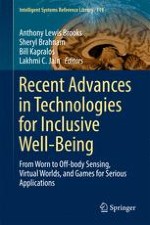2017 | OriginalPaper | Chapter
5. Technology for Standing up and Balance Training in Rehabilitation of People with Neuromuscular Disorders
Authors : Imre Cikajlo, Andrej Olenšek, Matjaž Zadravec, Zlatko Matjačić
Published in: Recent Advances in Technologies for Inclusive Well-Being
Publisher: Springer International Publishing
Activate our intelligent search to find suitable subject content or patents.
Select sections of text to find matching patents with Artificial Intelligence. powered by
Select sections of text to find additional relevant content using AI-assisted search. powered by
